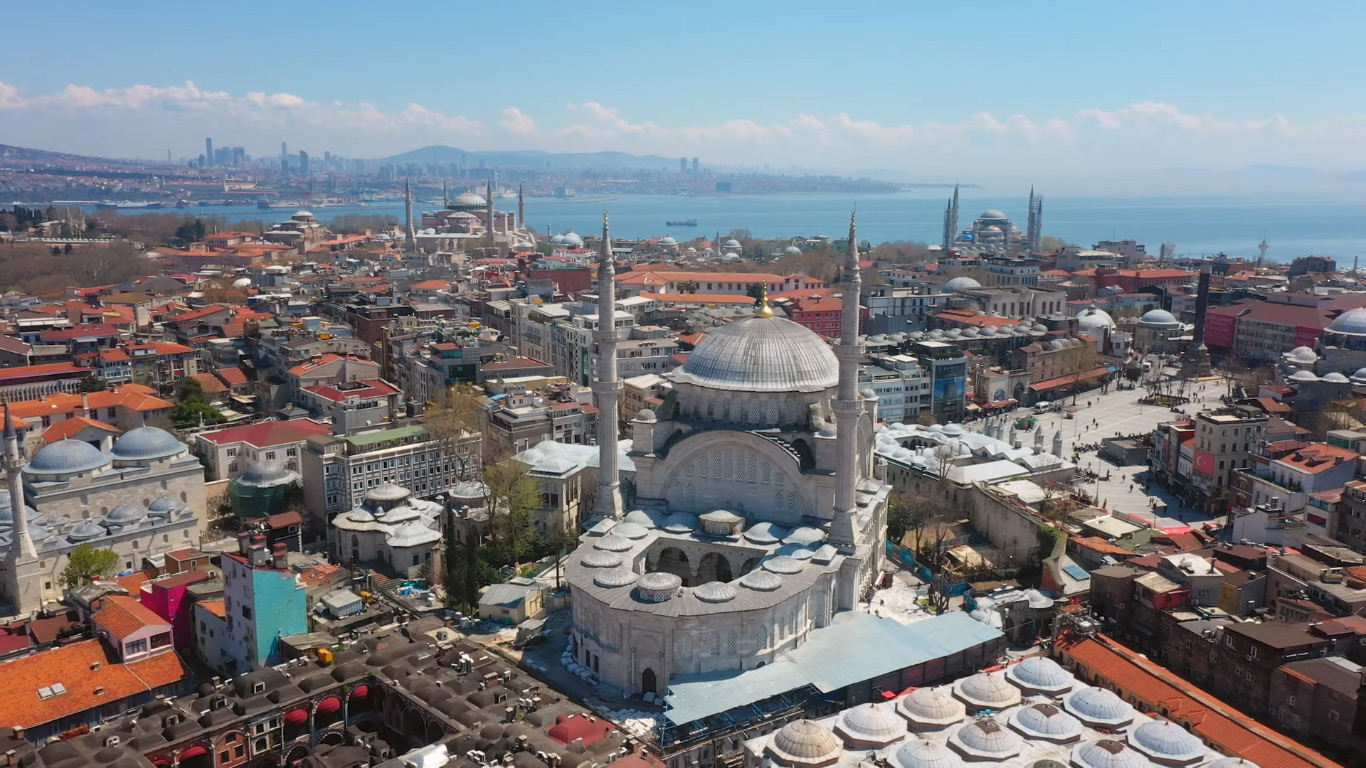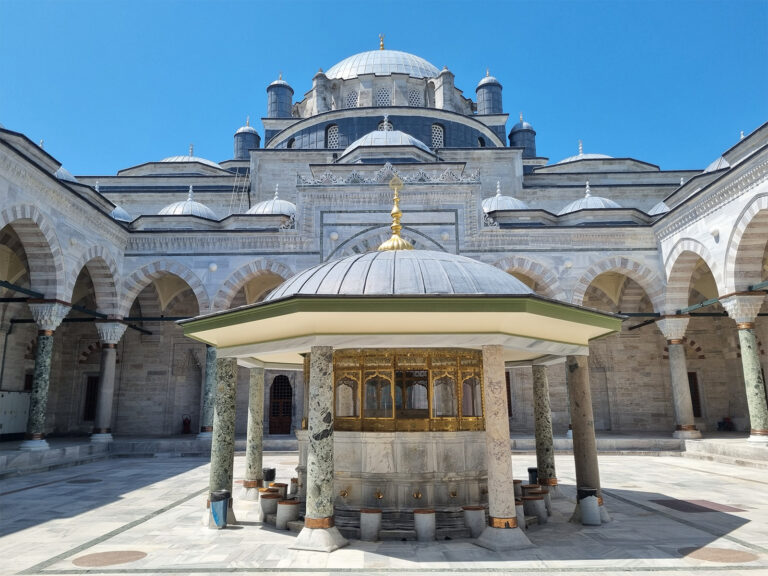Nuruosmaniye Mosque
The Nuruosmaniye Complex, situated in the heart of Istanbul near the historic Grand Bazaar, is a significant edifice constructed in the first half of the 18th century by Sultan Mahmud I and later completed by his brother, Sultan Osman III. The foundation of this structure was laid on January 19, 1749, and it was completed on December 5, 1755, earning the name “Nuruosmaniye” (The Light of Osman).
Features of the Nuruosmaniye Complex:
- Location and History:
- The complex is located adjacent to one of Istanbul’s historical and commercial centers, the Grand Bazaar.
- Initiated by Sultan Mahmud I, the construction was completed by Sultan Osman III following Mahmud’s death.
- Architectural Structure and Components:
- The complex comprises a mosque, imperial lodge (hünkâr kasrı), madrasa, library, tomb, fountain, water dispensing kiosk (sebil), public kitchen (aşhane-imaret), and shops.
- The mosque features a unique architecture influenced by the European Baroque style of its era.
- The central dome of the building, with a diameter of 25.50 meters, is supported by four large arches that distribute its weight.
- Other Structures in the Complex:
- Madrasa: Displaying a less flamboyant Baroque style.
- Public Kitchen (Imaret): Located in the outer courtyard alongside the madrasa, constructed in 1755.
- Library: Boasts an original plan with a distinct Baroque style, featuring an impressive reading hall.
- Tomb: Square-planned and covered with a dome, it is the resting place of Sultan Mahmud II’s wife and Sultan Osman III’s mother, Şehsuvar Valide Sultan.
- Architecture and Artistic Features:
- The Nuruosmaniye Mosque showcases traces of Turkish Baroque art, including the window and door arches, decorations, and Baroque motifs in the mihrab (prayer niche) and minbar (pulpit).
- The mosque and complex represent a new movement in Ottoman architecture, holding a unique place among the imperial mosques of Istanbul.
- Cultural Significance:
- The Nuruosmaniye Complex is a historical and cultural heritage that illustrates the evolution and transformation of Ottoman architecture in its later periods.
The complex, with its architectural features and contribution to Istanbul’s historical fabric, is noteworthy and enhances the city’s cultural richness.



